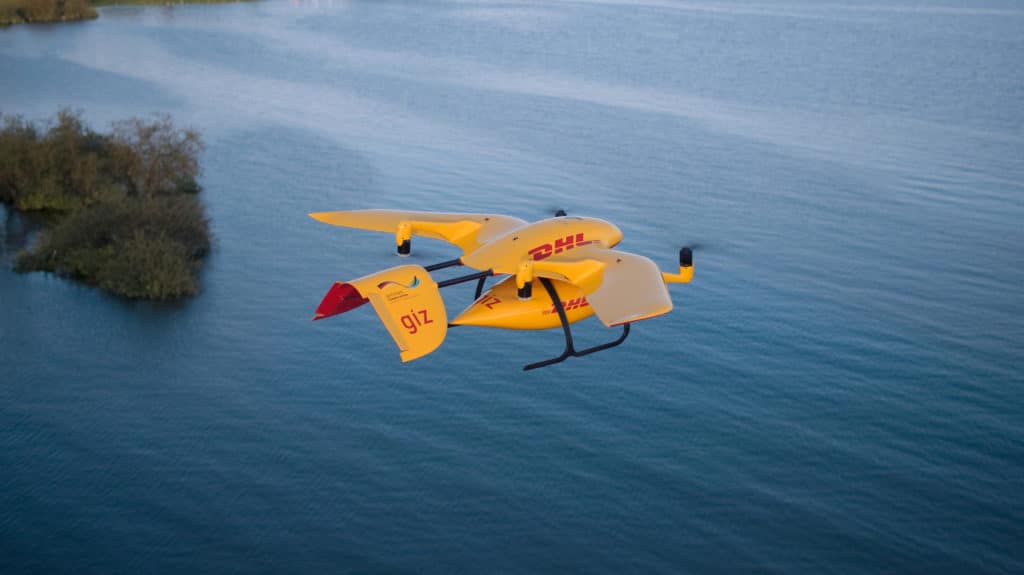Although drones have many practical and valuable uses, they can also be used for harmful purposes. With the advancement of technology, the potential threat increases. Counter-UAS technology is a relatively new technology that offers a solution.
With the proliferation of drones, regulations and control must keep pace. There are several instances in which drones, or unmanned aircraft systems (UAS), have been used by criminals for nefarious purposes. There has been a number of close calls involving traditional aeroplanes as well.
Apart from regulation, the solution is Counter-UAS (Unmanned Aircraft System) or CUAS. These systems are designed to detect and track drones and UAS and either destroy or disrupt them when they pose a threat. There are a range of technologies used to achieve this and we will get into more detail further on.
Definition and Purpose of Counter-UAS Technology
The main goal of Counter-UAS Technology is to detect, identify and mitigate potential drone threats. This could apply to airspace, sensitive infrastructure, public events, and anywhere a drone might pose a threat or potential threat.
The systems are designed to detect drones, identify them, and track them. They then have the ability to mitigate the threat as and when necessary.
Mitigation can be done by disrupting the signal between the UAS and the controller, some, such as the ATHENA Laser Weapon System, use laser technology to literally blast the drone from the sky, while others use airborne nets to secure the drone threat. Yet another solution is a sky fence system. These make use of multiple signal disrupters that block control signals from getting to the drone.
How Counter-UAS Technology Works
As stated above, there are three main steps in the CUAS process, detection, identification, and mitigation.
Detection
This can be done in various ways. Passive RF detection or RF triangulation is the most accurate and common technology used. The UAV emits a radio frequency (RF) that can be detected, and triangulation allows for accurate positioning and tracking. The operator or system will have airspace situational awareness. PTZ (pan-tilt-zoom) cameras are often used in the tracking process.
Other technology includes 3D radar, acoustic, and optical detection. The benefit of these methods is that they work even where there is no RF signal.
Some systems are designed to be portable while others are fixed. Many use a combination of technologies.
Identification
The next step is to determine if the drone is a threat or a friendly UAS. It is also important that the system does not deliver false detection of other airborne objects such as birds. The main way this is done is with micro-doppler radar.
Imminent regulation from the FAA (Federal Aviation Administration) will mean that all operators of UAS register the drones that they register their drones. All drones are required to have Remote ID in order to make them easy to identify.
Mitigation
Again, there are various ways a drone threat can be mitigated. These include:
- Signal jammers and GPS Spoofers – these disrupt the signal to the drone so that the operator no longer has control.
- Sky fence systems – this is a variation of the above and as the name suggests, a virtual sky net is formed above a site or area. Multiple signal disrupters are incorporated to block signals to the drone, keeping the area safe from rogue drones.
- Nets – these can be launched by a net cannon or by another drone.
- High-energy lasers – focused laser beams can destroy the electronics or obliterate the entire drone.
- High Power Microwave (HPM) Devices – HPM devices use Electromagnetic Pulse (EMP) to disrupt the rogue drone’s electronics.
- Cyber Takeover Systems – this technology uses AI (Artificial intelligence) to hack into the drone and take over control.
Often a combination of technologies is used for a layered approach and additional security.
Current State of Counter-UAS Technology
As with the advancement in drone technology, CUAS technology is advancing rapidly. As you can see from the above, there are many methods to implement the various aspects of CUAS and they are evolving exponentially. Many companies are investing significant resources in research and development to refine these measures.
Advancements in Counter-UAS Technology
While current methods have proved to be effective in many instances, drone threats are increasing and CUAS needs to constantly evolve and improve. AI is likely to be a game-changer as it allows for more accurate detection, identification, and mitigation. Another technology that is making it harder for rogue drones is machine learning. More on that later.
Challenges and Limitations
As with all developing technologies, CUAS comes with many challenges. One is that as the Counter-UAS Technology improves, the rogue operators become more sophisticated. The same technology that aids CUAS can also be employed by rogue operators. The companies developing CUAS need to stay one step ahead of the criminal element.
There is also the issue of legality. In the wrong hands, CUAS technology can be used for nefarious purposes. There needs to be regulation and control over who has access to the technology.
The legislation takes time to adapt, and the FAA and other relevant parties have a hard time keeping up with the speed of evolution. While there is a definite need for CUAS, more effort needs to be made by regulators to speed the process up and ensure it does not hold the technology back while keeping control over CUAS.
Liability is another challenge that needs to be addressed. While the purpose of CUAS is safety and security, many systems pose potential threats.
Quality control of equipment is also necessary. While most of it is exceptional quality, as with any product there are some manufacturers and suppliers that deliver inferior products. Given the critical nature of CUAS, it is essential that there is strict quality control.
The Role of AI and Machine Learning in Enhancing Counter-UAS Technology
These rapidly emerging technologies are making the implementation of CUAS infinitely more accurate and effective than early systems. The algorithms employed by machine learning improve the identification of drones and determine if they are a threat or friendly.
AI improves tracking and the flight path of threatening drones. It helps to predict the future movement of the UAV.
Regulatory and Legal Issues in the Deployment of Counter-UAS Systems
Agency regulators as well as state and federal laws are not adapting fast enough to Counter-UAS Systems technology. Legislation and regulation must pass through several stages and bodies before it is adopted into law. The rapid growth and progression of CUAS technology make this a major challenge.
Having said that there were, and still are, many challenges that face the regulation of drones and UAVs. The FAA has made great progress in addressing this issue and while it will still take some time, they are hard at work to create progressive rules for the CUAS industry.
Another notable project is the development of the CUAS Coalition. The organization aims to work with the authorities and industry to ensure fair and rapid regulations that ensure the safe growth of this important industry.
Key Players in Counter-UAS Technology
There are many established companies as well as a host of proactive startups involved in CUAS Technology. Here are a few of the main players.
DroneShield
Employing some of the sharpest minds in the business, DroneShield is at the cutting edge of CUAS Technology. It is a publicly listed Australian/U.S. company. They use AI, machine learning, RF sensing, and Sensor Fusion, among other technologies. They create customized CUAS solutions for military, law enforcement and government use, critical infrastructure protection, VIP protection and commercial use. They have been in operation since 2014.
Some of their products include:
- DroneGun Tactical
- DroneGun Mk 3 and Mk4
- DroneCannon Mk2
- RfPatrol
- DroneSentry-X
Some of their notable achievements include comprehensive protection of the Texas IRONMAN 2023.
DroneSec
DroneSec is a trailblazer in the CUAS industry and uses intelligence services as well as their advanced technology to give them the edge over UAV threats. Staff are highly skilled and DroneSec runs the acclaimed Drone Security Operations Certification. They have a global presence which aids in their intelligence gathering.
They have provided CUAS to hundreds of organizations across the globe. Their mission is to “provide you with the most effective threat intelligence systems to stay aware of the threat and ahead of evolving risks.”
Their products include:
- Intel Platform
- Stolen Drone Database
In 2021 DroneSec won the DroneSec Notify wins the Airwards. Judges had the following to say “The most innovative, responsible and impactful example of drone use in its category. Notify pulls detection and incident data from hundreds of sources to give a single operating picture of malicious or rogue drones around the globe.”
Dedrone
Dedrone is an international company that offers a vast range of solutions to organizations to prevent the threat of malicious drones or UAVs. They use advanced technology including AI and machine learning.
They are continuously innovating and advancing their proprietary technology. This allows them to create bespoke detection, tracking, and mitigation solutions for any environment. They often use a multi-layered approach.
Solutions include:
- DedroneTactical
- City-WideDrone Detection
- DedroneFixedSite
- DedroneRapidResponse
- DedroneDefender
- DroneDefender
- DedroneTracker
- DedroneSensors
- Radar, PTZ Cameras, and acoustic, sensors
This video illustrates how Dedrone became the leading airspace Counter-Drone Technology. Another significant accomplishment was their achievement stopping Drone Contraband at Kentucky DOC.
Trends and Future Predictions in the CUAS Industry
According to Market Research Future, it is anticipated that the global market for CUAS is expected to reach $4,6 Billion by 2030. There is little doubt that drone and UAS threats will continue to increase. Air traffic is another major issue, also on the increase, that will drive the demand for CUAS.
Over time, awareness is expected to increase. Market growth will eventually lead to a price reduction – Moore’s Law.
There is little doubt that the rapid evolution of AI, machine learning, and a host of other technologies with be a big driver in the CUAS industry going forward.
Case Studies
Successful use of Counter-UAS technology – Preakness Stakes, Santa Anita Park, California
Dedrone successfully implemented a CUAS system at the Preakness Stakes and Pimlico Race Course. This was to prevent threats to guests, staff, jockeys, and horses. It also ensured that there was no interruption to their internal and external signal and broadcasts as well as preventing illegal footage.
This video will explain the exercise in more detail.
Lessons Learned from a Failed Deployment
While CUAS is effective in most cases there are instances where they fail. Russia’s war on Ukraine is a good example. Despite Russia having a sophisticated multi-layered CUAS system there have been numerous instances where drones have evaded the system. You can read more about the issue here and here.
The takeaway from this is the reliance on the host nation deploying strategic surveillance and that their system is static. The second comes down to basic strategic warfare errors. Due to the tactics used by Russian forces, CUAS could not protect all tactical groups at all times. These factors left gaps in the CUAS defence which the Ukrainian forces exploited.
Conclusion
Counter-UAS Technology is an essential defence in our modern world. Always remember that while the purpose is to protect people and property it can also be used for corrupt or evil purposes. Drones and UAVs do a lot of good, but they also pose an ever-increasing risk. Fortunately, CUAS technology is improving exponentially and rapidly with many leading companies involved. Regulation is important as is quality control.
Governments, military, law enforcement, airlines, sports and entertainment areas, companies, and even the average man in the street need to be aware of CUAS and watch the development closely. It has implications for everyone. As the technology and regulations develop it is important to be aware of the changes and act where necessary. Stay informed and up to date.




